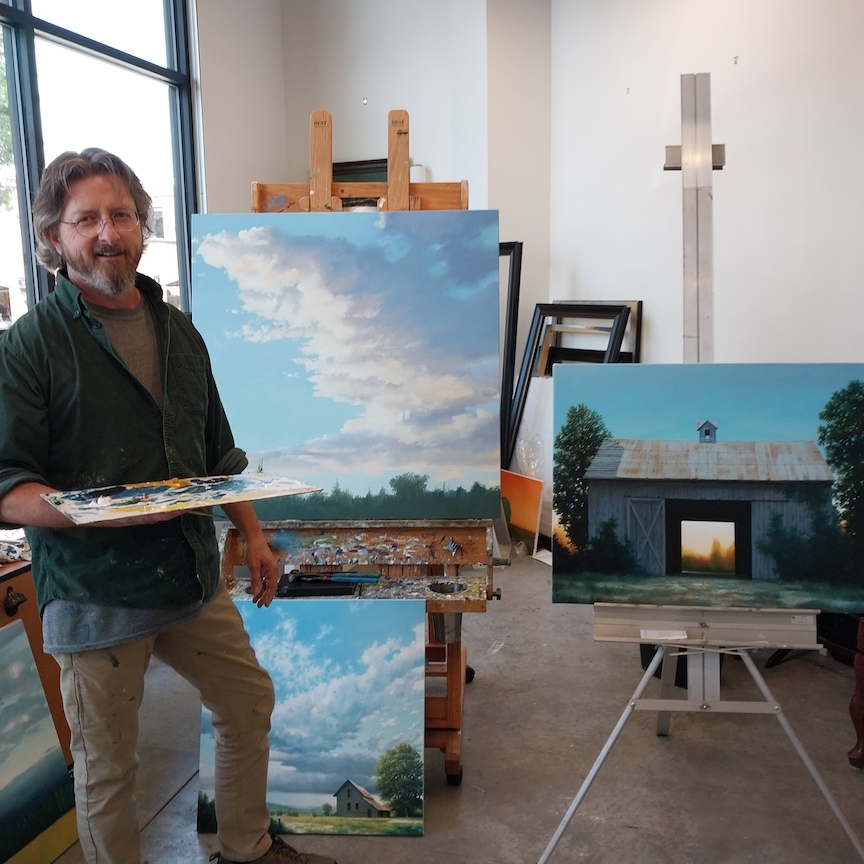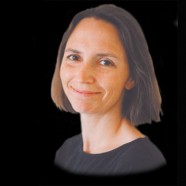
Graphite is a fascinating mineral – a crystalline form of Carbon, which is a nonmetallic chemical element represented, simply, as C in the Periodic Table of Elements.
Graphite is a good conductor of heat and of electricity. And it’s versatile – used in pencils and polishes, crucibles, lubricants – even in the cores of nuclear reactors.
Graphite is also the name that Mary Olsen chose for the multi-use art hub she conceived of and built in Edmonds, Washington. And once you visit the place, you’ll recognize that the name is spot-on, because sketching in pencil – in other words, drawing with graphite – is often the first step in producing a work of art.
Olsen sat down recently for an impromptu interview, and generously spent the better part of an hour talking about how Graphite came about. The artist, with a dash of pink in her hair and a smudge of paint on her shirt, is passionate about the importance of art in people’s lives.
Olsen’s idea for this facility developed after she had built her own successful career in what Washington State residents call “the Other Washington” – D.C. – at the Smithsonian.
By the time she moved across the country to the Pacific Northwest, Edmonds already had established its reputation as an arts-friendly bedroom community just a few miles north of Seattle. It had been founded as a waterfront logging operation in the late 19th century, but the last mill shut down in 1951, and within the next decade, Edmonds had begun reinventing itself. In 1956, it introduced an arts fair, which has since become one of the largest regional events of its kind. A nonprofit community theater debuted a year after that, followed a few years later by the establishment of a local symphony orchestra. Art galleries and other creative-sector small businesses followed. The old high school was revamped into a state-of-the-art performing arts center in 2006, and the Cascadia Art Museum, focusing on Northwest visual arts and design opened in 2015. In 2018, downtown Edmonds was designated as Washington State’s first Certified Creative District.
But as a working artist herself, Olsen was keenly aware that there were still some gaps that needed to be addressed.
Local elementary schools weren’t providing students with any significant visual arts education, for example, so she founded a nonprofit organization, Art Start Northwest, to gather high-quality art supplies and donate them to the schools. But there were more hurdles to overcome.
“Teachers would say, ‘I can’t draw, I’m not an artist,’” Olsen said.
So the nonprofit began providing professional development workshops for teachers, covering the basics regarding design principles and color theory, showing them different techniques they could use with different mediums, and giving hands-on, practical demonstrations as to how teachers could incorporate art-making activities into lessons about science and mathematics.
Art Start Northwest also ensures that in those art supplies they continue to deliver to the schools, there’s a sketchbook for every student. Many teachers now incorporate a daily sketchbook practice into the class day.
It’s not just a chance to practice a new technique, Olsen emphasized. Even if it’s only 10 minutes, “It’s calming. It gives kids a chance to take a deep breath and reflect.”
With the education gap addressed, another even larger challenge needed to be addressed: Edmonds was becoming a more upscale, tourist-oriented destination, but working artists still needed to have the space to continue doing their messy work.
Graphite Arts Center was the result of many years of careful planning and design. Opening its doors in 2022, the facility, just two blocks away from the ferry dock on the waterfront, provides an appealing gateway to visitors coming from across Puget Sound. The modern Northwest-style architecture features wood beam ceilings, Corten panels and large windows that bring plenty of light into the building’s interior. Anchoring one corner of the building, Charcoal is a restaurant featuring cuisine prepared on a custom-built charcoal and wood-fired grill.
Otherwise, the facility is dedicated to visual art. There is a gallery with that hosts a regular rotation of shows, and just off the front entrance there’s a large communal visual arts resource area. A wide-open workspace that is flooded with natural light and furnished with large, paint-spattered work tables fills the center of the building. It offers space where the artists who have lockers in the building can come in, do their work in the common area, then stow it back in their lockers when they are done. Additionally, Olsen pointed out that there are 12 studios in the building which other artists rent and use as their own space.
 One of them is Andy Eccleshall, who had his own home studio, but who has rented this space almost since Graphite opened.
One of them is Andy Eccleshall, who had his own home studio, but who has rented this space almost since Graphite opened.
“It’s been a life-changer,” Eccleshall said, palette in hand, as he put finishing touches on his latest work. The light in here is fantastic. I come in at 7:30 in the morning, five days a week, and put in a full eight hours. There are people around here to converse with and trade ideas with.
“I’ll do this until I’m 90, or dead, or until my arms fall off.”
This, Olsen said, is what she had been aiming for: building collegial relations among artists, providing a space where they can come together, compare notes, work on new techniques, “break the rules,” and make a mess.
“It’s a great place for artists to focus on their work.”
Graphite – the Arts Center – lives up to its name. It provides the world with polish and beauty. It has been a crucible for bringing forth new ideas and new understanding. It’s been a lubricant, of sorts, too – enabling artists to share concepts and emotional understanding. It has ignited their creativity, freeing them to explore.
“Everyone here has grown,” Olsen said.
Barbara Lloyd McMichael is a freelance writer living in the Pacific Northwest.









